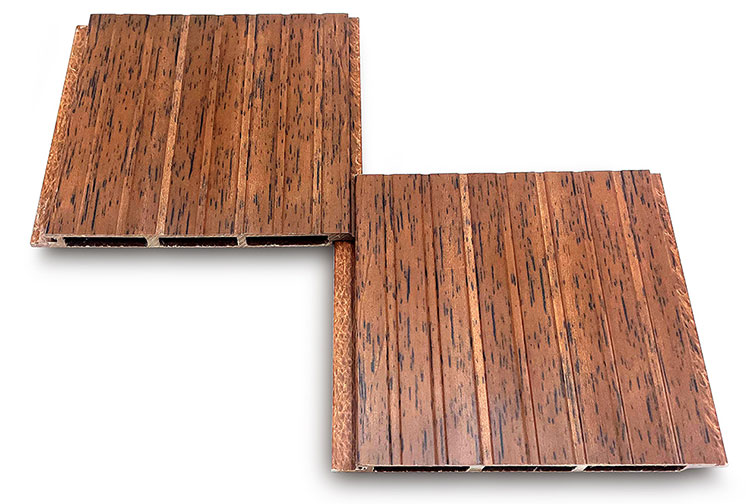When it comes to choosing the ideal decking material for your outdoor living space, the options can seem overwhelming. Two popular choices that have gained significant traction in recent years are FRP (Fiberglass Reinforced Plastic) decking and 3D embossed WPC (Wood-Plastic Composite) decking. Both materials offer unique advantages and cater to different preferences, but which one is the right choice for your project? Let's delve into a comprehensive comparison.
FRP Decking: The Durable and Low-Maintenance Option
FRP decking is manufactured by combining fiberglass fibers with a resin binder, resulting in a strong, rigid, and non-porous material. This composite material is renowned for its exceptional durability and resistance to moisture, rot, and insect damage.
Key Benefits of FRP Decking:
Durability: Extremely long lifespan with minimal maintenance.
Low Maintenance: Resistant to stains, mold, and mildew, requiring only occasional cleaning.
Slip Resistance: Excellent traction, making it safe for wet conditions.
Customizable: Available in a wide range of colors and finishes.
Chemical Resistance: Resistant to chemicals and UV rays.
Drawbacks of FRP Decking:
Higher Initial Cost: FRP decking is generally more expensive than WPC decking.
Limited Natural Appearance: While available in various colors and finishes, FRP decking may not have the same natural look and feel as wood.
Thermal Conductivity: FRP decking can become hot in direct sunlight.
3D Embossed WPC Decking: The Natural Look with Modern Performance
3D embossed WPC decking is a composite material made from a blend of wood fibers and recycled plastic. The 3D embossing process creates a realistic woodgrain texture, giving WPC decking a more natural appearance than traditional composite decking.
Key Benefits of 3D Embossed WPC Decking:
Natural Appearance: Mimics the look and feel of real wood.
Low Maintenance: Requires minimal maintenance, such as occasional sweeping and cleaning.
Durability: Resistant to rot, decay, and insect damage.
Environmentally Friendly: Made from recycled materials.
Variety of Colors and Styles: Available in a wide range of colors and finishes to match various design aesthetics.
Drawbacks of 3D Embossed WPC Decking:
Potential Fading: Over time, the color of WPC decking may fade due to exposure to UV rays.
Expansion and Contraction: WPC decking can expand and contract slightly with temperature changes.
Scratch Resistance: While more durable than traditional wood, WPC decking can still be scratched by sharp objects.
Comparison Table
| Feature | FRP Decking | 3D Embossed WPC Decking |
| Durability | Extremely durable | Durable, but may require periodic maintenance |
| Maintenance | Very low maintenance | Low maintenance |
| Appearance | Smooth, non-porous finish | Realistic woodgrain texture |
| Cost | Higher initial cost | Lower initial cost |
| Environmental Impact | Moderate environmental impact | More environmentally friendly |
| Slip Resistance | Excellent | Good, but may vary based on the specific product |
Choosing the Right Decking Material
The best decking material for your project depends on a variety of factors, including your budget, lifestyle, and design preferences.
Choose FRP decking if: You prioritize durability, low maintenance, and a clean, modern look.
Choose 3D embossed WPC decking if: You desire a natural wood appearance, a lower initial cost, and a more environmentally friendly option.
Ultimately, the decision comes down to your personal preferences and the specific needs of your outdoor space. Consider factors such as the climate, the amount of foot traffic, and the overall aesthetic you want to achieve.
Conclusion
Both FRP and 3D embossed WPC decking offer unique advantages and can be excellent choices for your outdoor living space. By carefully considering the factors discussed above, you can make an informed decision and select the decking material that best suits your needs.
 +86 15303735673
+86 15303735673 Jessica@frpzs.com
Jessica@frpzs.com
 Technical Data
Technical Data












